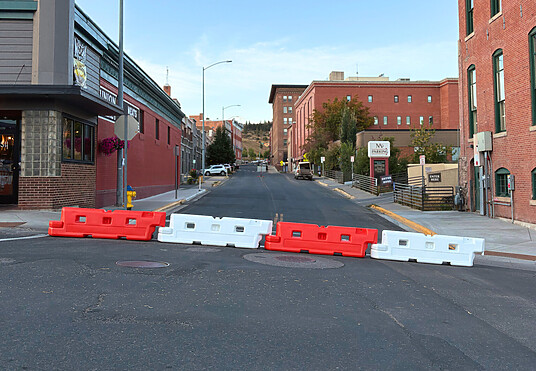What Does Your Barricade’s Carbon Footprint Look Like?

Plastic barricades actually have a smaller carbon footprint than traditional steel barricades. When steel barricades are manufactured they go through a process called galvanization – a process that can be hazardous to the environment. Although controls have been put in place in most modernized countries to curb these effects, the controls make the production of galvanized steel more expensive resulting in a higher prices from manufacturers that are producing responsibly.
If you find a low-priced steel barricade it has most likely been galvanized somewhere where environmental controls have not been implemented.
One of the main issues with galvanization is the waste water run-off. During the galvanizing process, steel undergoes a pickling process. The pickling process involves immersing product material through a series of tanks to clean and prepare the material prior to immersion in a molten zinc bath.
Two major sources of waste water are generated from the galvanizing process: waste acid and acidic rinse water. Waste acid is generated as a result of a build-up of iron and other impurities in the acid which greatly reduces its effectiveness for pickling. The acid must be disposed of properly, taking up landfill space. If it is not disposed of properly it causes damage to the environment.
Acid rinse waters from the galvanizing process are acidic and contain low amounts of metals. This water is in the same situation as the waste acid; even if it disposed at a treatment plant, the treatment process still produces a sludge that has to be deposited in landfills.
Zinc is another component of the galvanization process. Zinc processing produces air emissions and solid waste emissions. The emissions include particulates, zinc fumes, volatile metals, flux fumes and smoke, rubber, plastics and zinc scrap.
Plastic isn’t necessarily a favorite among environmental advocates but when plastic production is compare to galvanized steel production we can see there is actually less impact. We do use virgin resin to manufacture our plastic barricades but we also reuse any excess and ensure there is no waste. Because we use such high grades of plastic, once their useful life is over, HDPE barricades are easily recycled into other useful items.


